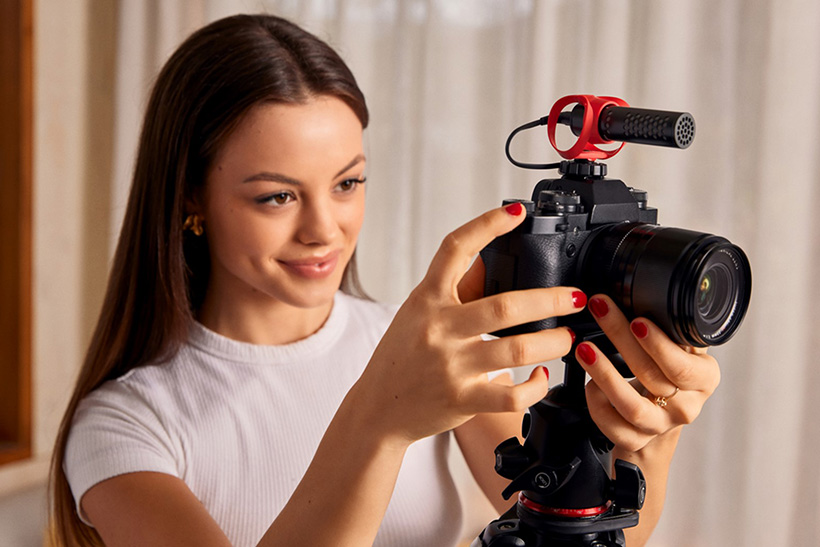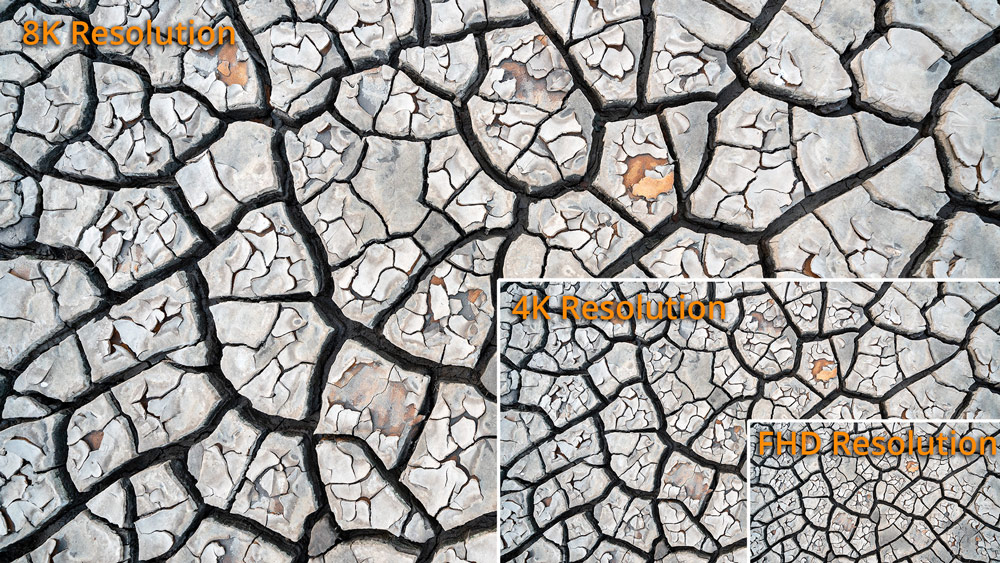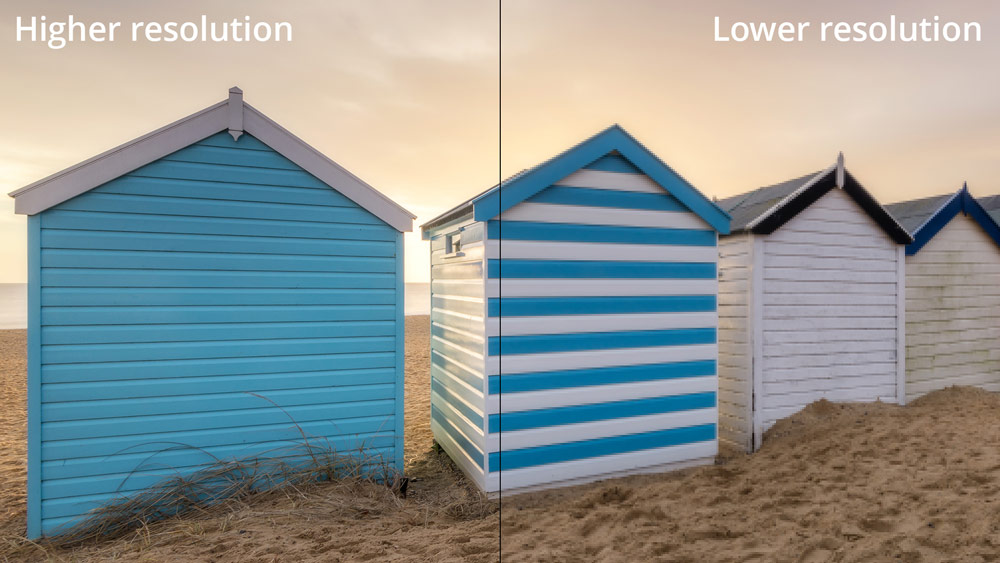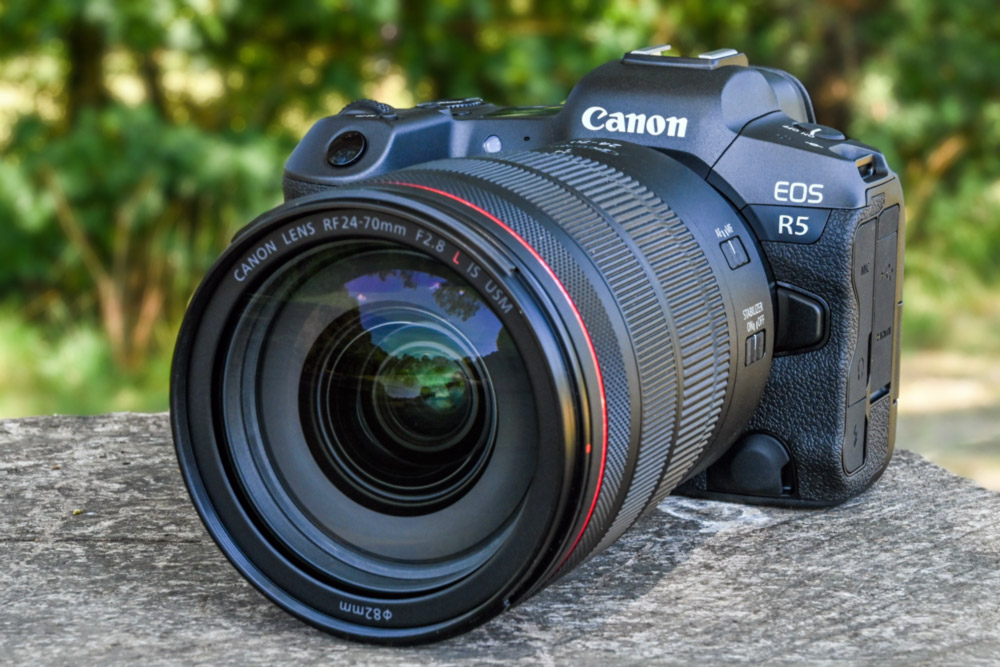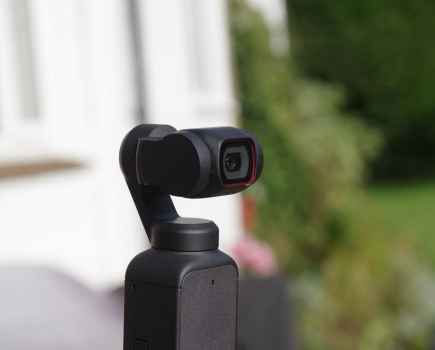It’s natural enough for photographers to progress to making videos – it can be done using the same great cameras for video, for a start. But there is much to learn about recording video, even for the most seasoned stills photographers.
Resolution is one of the easier concepts. With this ever-increasing in televisions and computer monitors, however, it can be confusing.We have the answers!
Full HD vs 4K vs 8K video: Introduction
As camera technology advances, so we are bombarded with new features and functionality. Like all things photography and video, the challenge is in identifying what matters. Different features naturally appeal to some people more than others, but resolution has long-since been a major selling point for cameras.
This started in the early days of DSLRs as manufacturers raced to increase sensor resolutions to more usable levels, and out-do the competition. After a plateau of some years, resolution is once again the focus of manufacturers as more and more new cameras have 8K recording capabilities. The question is, who really needs 8K or even 4K – and is Full High Definition (FHD) more than enough?
These are tough questions because people’s needs are different; for some, FHD is ideal, while for others and even some professionals, 4K is the resolution of choice. For filmmakers working on movies, 8K is the preferred capture resolution to future-proof high-end work and take advantage of 8K televisions – and that’s the clue.
For filmmakers working at the highest levels, future-proofing is essential for commercial, creative and technical reasons. For most people, though, this level of future-proofing is prohibitive (as we shall see). With this in mind, let’s take a look at resolution and future-proofing in more achievable terms.
Understanding screen resolution: Full HD vs 4K vs 8K video
You may well have some insight into video resolution from experience of televisions, computer monitors and laptops. It remains an important selling point for all three. FHD, 2K and 4K are the most common, and even 8K televisions are now emerging.
This doesn’t necessitate the use of a TV or monitor that’s the same resolution as the video you’re watching. Modern televisions use a feature known as upscaling, which makes lower-resolution video fit the screen of a higher-resolution television.
Some are exceptional when it comes to upscaling, where 1080p on a 4K screen looks fantastic. Others are less effective. Conversely, lower-resolution televisions will down-sample higher-resolution video to fit.
At one point in the not-too-distant past, 720p televisions were a popular option and much less expensive than their 1080p counterparts – how times have changed! High definition, which is 1280 x 720px is rarely used for screens these days. Full HD is used less, but remains an available option. Most people currently purchase new TVs and monitors that are either 2K or 4K. Price is always a factor, and typically the higher the resolution of a device, the higher its cost.
It’s safe to assume that, even as 8K televisions become more widely available, and indeed affordable, upscaling technology will remain and likely improve. We will be able to play back lower resolution video on these televisions at a high quality when we eventually own one.
The question is, who currently owns an 8K TV? It will take years for this technology to become mainstream.
How resolutions compare: Full HD vs 4K vs 8K video
Video resolution is simply the pixel dimensions of footage, typically captured and played back in a 16:9 ratio. The higher the resolution, the more detail is captured and results in a sharper, more realistic picture. This might lead you to assume that the higher the resolution the better. This is true of image quality, but the higher you go the more the challenges.
When describing 720p and 1080p video resolution, it’s the vertical height of the footage in pixels that’s used. For 2K, 4K and 8K, it’s the horizontal line of pixels. FHD footage is 1920 x 1080px; 4K footage is 3840 x 2160px; and 8K footage is 7680 x 4320px.
Those with a keen eye will have noticed that 4K is twice the width of 1080p and 8K is twice the width of 4K, making each resolution increase four times larger than the previous.
This all sounds incredible when thinking about sharpness and detail – but comes at a cost. Several factors can affect video file sizes, but we can already see that, with a resolution four times greater than 1080p, 4K file sizes will be much larger.
The same goes for 8K when compared to 4K footage. The file sizes produced when shooting at even 4K are large, and those at 8K are unworkable for most people.
To put these figures into perspective, a single frame from FHD video is just over 2MP, a single frame from 4K video is 8.3MP and a single frame from 8K video is 33.2MP.
Multiply this by 24fps for a second of video and you have an idea just how large video files can be. Of course, the type of video file captured and the level of compression used etc. are factors that could reduce file sizes, but 8K video files are eye-wateringly huge.
This means that the higher the resolution you shoot at, the higher the capacity of SD, XQD or CF cards you need in your camera; which are more expensive. Higher capacity hard drives and a progressively more powerful and indeed expensive computer are also in order; which make shooting video at higher resolutions ever more expensive. Cameras processing more data use more power and generate more heat, so you’ll also need more batteries for shooting.
When to record video at different resolutions: Full HD vs 4K vs 8K video
- Shoot in FHD if you have a slow computer and/or you aren’t too worried about future-proofing your videos.
- Shoot in 4K for a manageable, high-quality and high-resolution option with the potential to future-proof.
- Shoot in 8K if you’re a professional filmmaker with a commercial, creative and technical need to do so.
4K resolution could be the best option. It has become the standard; most cameras can capture video at this resolution and the majority of TVs and many computer monitors also use it. Not so long ago really, 720p was good and 1080p was better – that’s where we are today with 4K vs FHD.
Sure, 8K is better, but is far from mainstream for consumers before we even begin to think about its file size and computing requirements.
4K is the happy medium – not just because it sits in the middle – but because it’s the bridge between yesterday’s and tomorrow’s mainstream technology. It will still eat up plenty of storage space and require a fairly powerful computer for editing. However, it will future-proof your videos and provide high-quality footage with more detail than FHD, and is much more practical than 8K.
If your intended output resolution is FHD you can still benefit from shooting in 4K and exporting the footage to FHD – the image quality is better than footage shot natively at FHD. The main challenge with shooting in 4K remains storage and computer processing, but high-capacity external hard drives are fairly inexpensive, and there’s a solution that makes 4K video storage more manageable.
Editing 4K video footage
Modern computers are incredibly powerful. If you have a gaming PC or high-end PC with dedicated graphics card, along with all the processing power that’s ideal for editing photos and videos, then you should be able to playback 4K video footage without it being choppy.
However, the footage that’s captured by your camera is often much less compressed compared to what you see on YouTube etc. This means that some PCs can struggle to playback footage.
It’s a wonder just how people manage to successfully edit video footage that’s 4K and above. The answer is proxy editing.
Proxy editing is simply an import of your high-resolution footage into video editing software with this functionality. Editing software offering proxy editing includes DaVinci Resolve, Final Cut Pro and Adobe Premiere among others.
Once the footage is available in the software, you create lower-resolution versions of the original files, for editing. Once ready to export, either re-link the original footage with the editing held in place; or simply export and let the editing software re-link to the original footage automatically.
Proxy editing provides smooth playback of footage during editing, which allows for precise editing and smooth playback. It’s the perfect way to edit high resolution-video without needing a high-end computer. This is also the way that professional video editors work [working with 8K footage would still require an extremely powerful computer and a flawless workflow. During export, the computer will be rendering the original footage. And colour grading is best applied to full-resolution footage].
Which cameras shoot video in 8K?
Those not put off by huge file sizes, high-capacity storage and the need for an extremely powerful computer, may wonder which cameras can shoot video in 8K. This feature is currently limited to higher-end professional models and doesn’t offer as much functionality in terms of frame rates as 4K and 1080p. It will take time for this resolution to filter down to enthusiast and beginner models.
This short list is by no means exhaustive but gives an idea of the camera models that currently offer 8K video. These include the Canon EOS R5, Fujifilm X-H2, Nikon Z9 and the Sony A1. These are not cheap – those with a desire to film 8K video will need funds – and should check out our guide to the best cameras for video.
In practice, 4K is the option for important videos; for great image quality and a degree of future-proofing. If this feels like too much, then by all means, capture video at 1080p to take advantage of smaller file sizes and more manageable footage for editing.
There are no right or wrongs, but 4K is the current standard and the resolution that provides the best balance of image quality, file sizes and future-proofing for enthusiasts.
Further reading
- Common video problems and how to fix them
- Does sensor size matter for video?
- How to get started with vlogging
- Best external video screens
- Best-value audio accessories for video
Follow AP on Facebook, Twitter, Instagram, YouTube and TikTok

